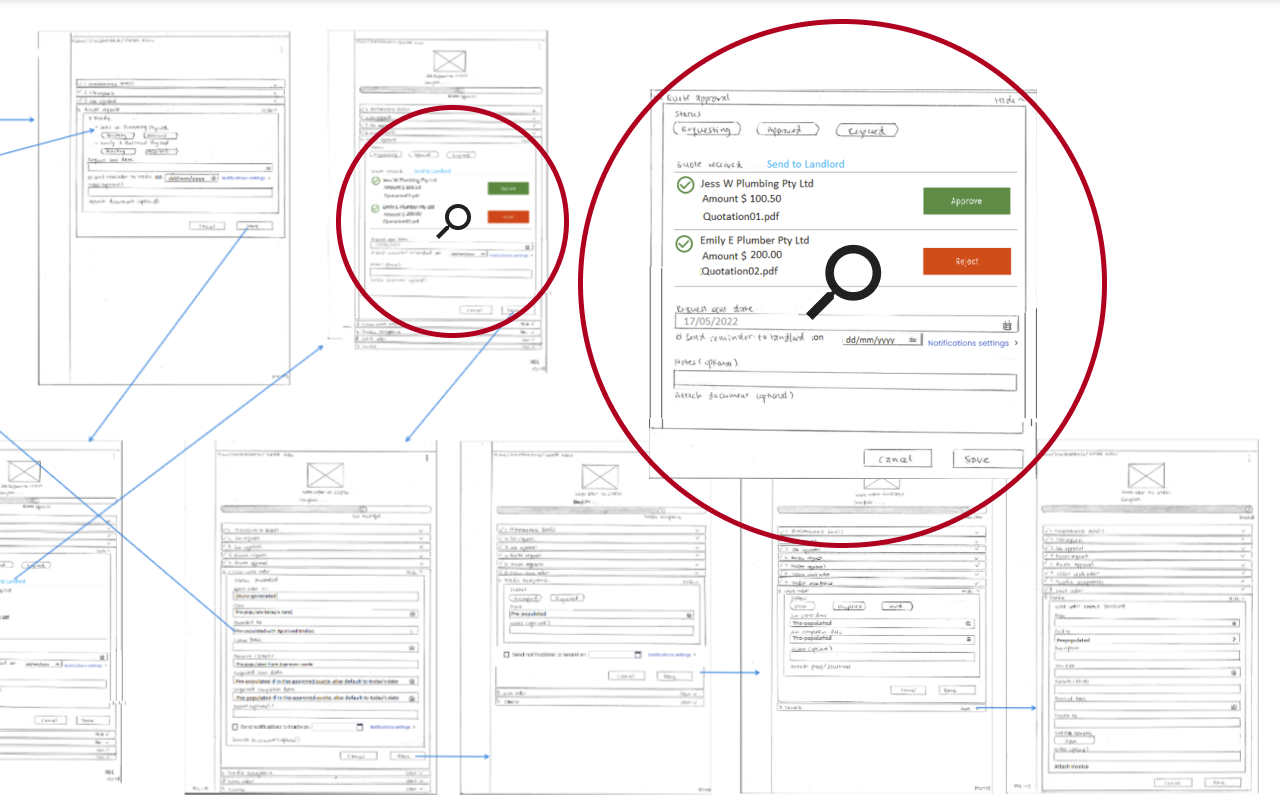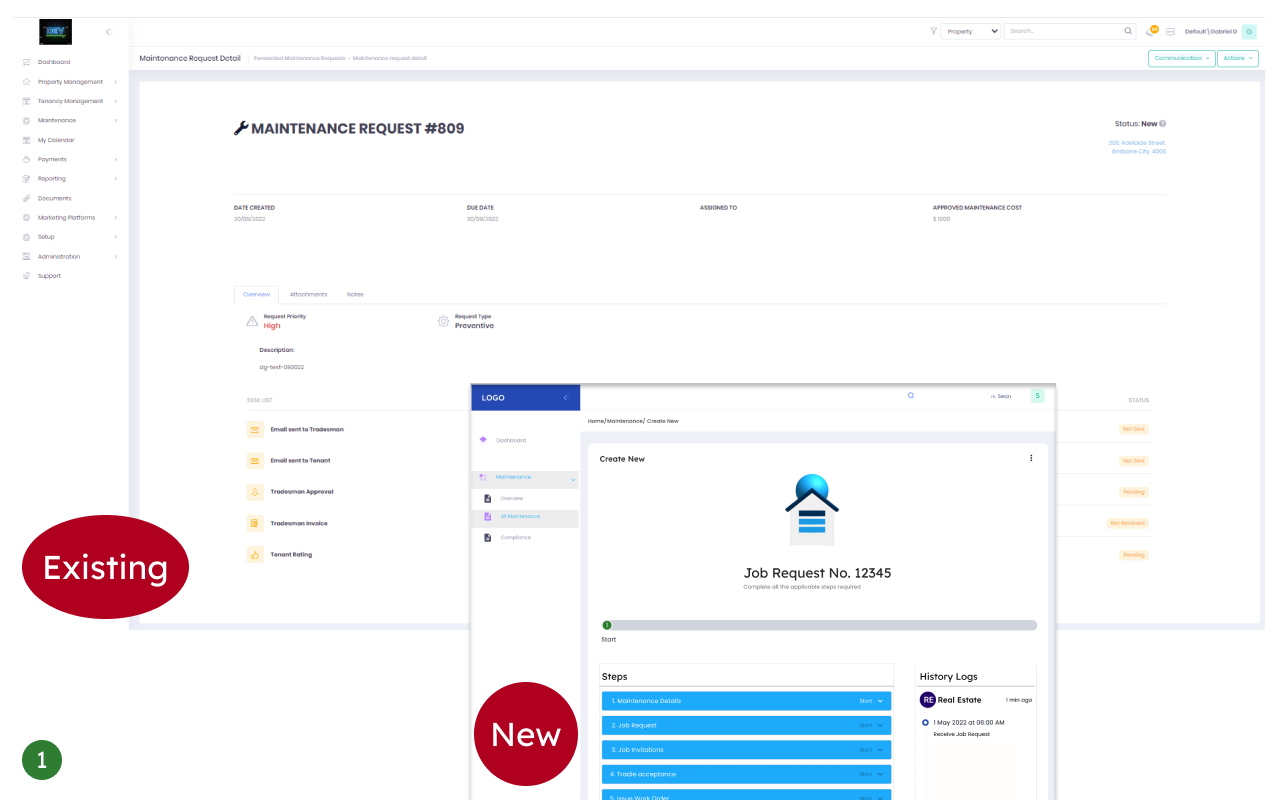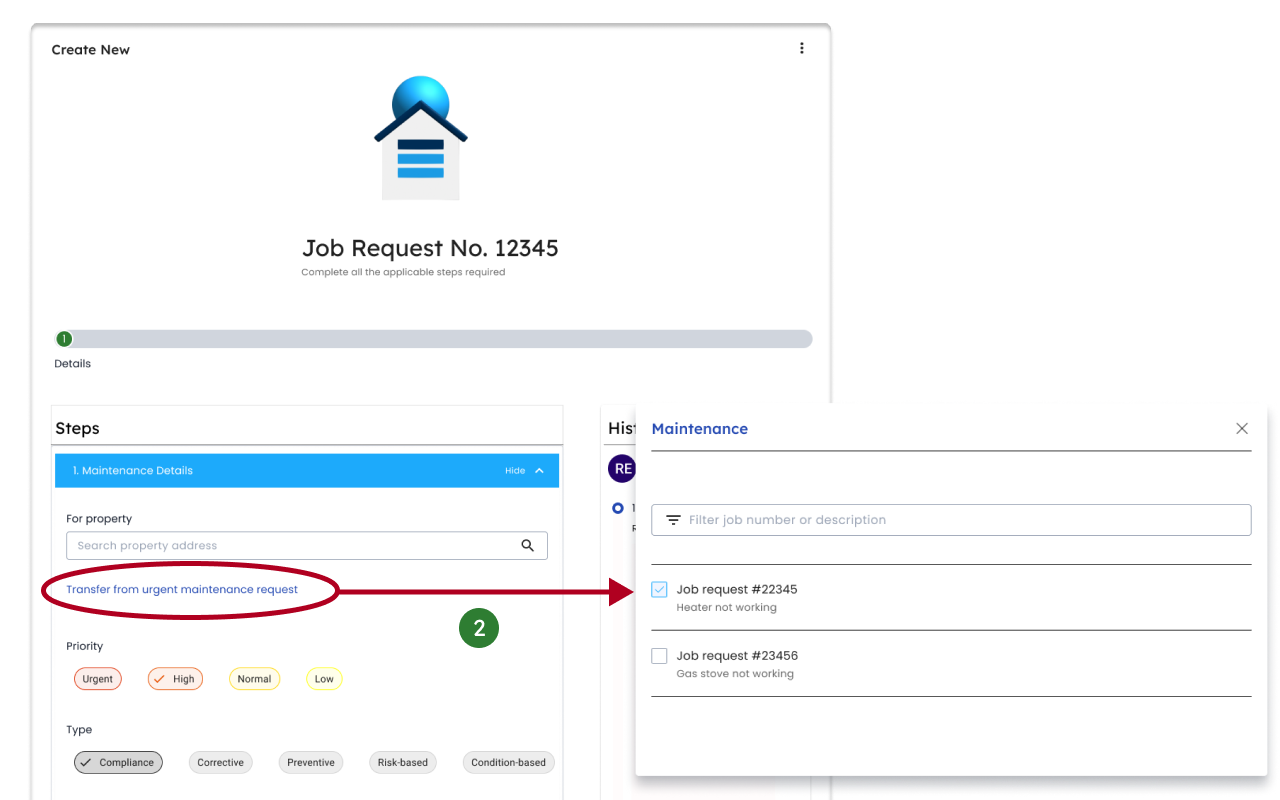DRR
DIGITAL TRANSFORMATION TO INTEGRATE MULTI-PLATFORM DIGITAL WORKSPACE
INTEGRATING ALL BUSINESS NEEDS INTO ONE HIGHLY SOPHISTICATED PLATFORM
DRR want to offer property management automation tool that integrates property agency’s existing systems and applications with real-time analytics capabilities, incorporates customer relationship management (CRM) elements and streamlines the process with digital document management tool eliminating data entry.
THE PROBLEM
Property Managers perform manual data entry and double handling of documents as the result of the multiple log-ins across multiple portals in current system when managing properties, e.g. Core Logic, Inspection Express, Zendesk, Xero, Pexa, Calendly, etc
THE CHALLENGE
Massive and complex system with myself as the sole UX UI Designer/Product Designer in the team, a Front-End Developer, a Lead Developer and five Back-End Developers.
The team has already started building the Web App before I joined the team, however, there is no documentation or artefact or design system found. As the result, to redesign the system workflow a thorough research and analysis are required to fully understand the current system workflow to ensure that there will not be any conflict and issue when the new system is going live.
We found that the live online payment module is very challenging due to complexity of the payment type (Pay Anyone, BPAY, Transfer fund, Walk-in payment, Centrelink payment, Split payment, Credit Note) and the limitation of the payment gateway to cater all the business requirements accordingly.
Another challenge is the complexity of the maintenance - requests and work orders. Due to this complexity in the workflow, a flexible system workflow is critical which allows for reverse-flow under “special” circumstance, e.g., when quote is rejected which results to a need to request new quotes.
It is crucial to minimise user error - especially in the tenancy application, maintenance request and Centrelink payment workflows- therefore it is necessary to design a user-friendly system guiding the users throughout the entire full-cycle process to ensure all the mandatory steps required are completed in particular order.
Despite the fact that this app/web is a massive and complex system that built for client to manage properties owned by over 400 landlords and handle approximately over 500 urgent maintenance requests - we have very limited resources, time and budget as its constraints.
On the other hand, the technical challenges that I face are some interaction designs in my prototypes are not able to be reflected by Figma software.
MY ROLE
I am the sole UX UI Designer in the team who have been leading the entire product and system design since joined the team from March 2022 and collaborate with key stakeholders throughout the entire UX UI cycle in agile, scrum and lean environment.
These include conduct user research, competitor analysis, visual research, interprets data and qualitative feedback to create user stories, user personas, storyboards and sitemaps with structured Information Architecture; develop wireframing and prototyping; optimise the system, user interface and user experience based on user feedback and usability testing.
I also raise DevOps tickets and lead front-end developer to build UX UI according to design specifications and standard. And recently (September 2022), I am given more responsibilities by Director to take ownership of Centrelink payment sub-module, which part of the payment module.
THE APPROACH
FOCUSING ON MAIN PRIMARY OBJECTIVES
Research, strategise and design end-to-end Web App and Mobile App experience to help Property Managers manage properties –leasing, transaction payment and maintenance, with focus on reducing time spent on administration up to 50% on current system. This main portal module includes payment module, maintenance module and compliance sub-module, main dashboard, report modules, property modules and tenancy modules.
The next objectives to achieve are Web App (and then Mobile App) for Landlord to communicate with their Property Managers live and smoothly especially in maintenance work approval and to access their statement/report seamlessly.
Next in the line after the Landlord portal Web App are the Tradesman Web App (and then Mobile App) which allows live two-sided communication happen between Tradesmen and Property Managers.
The fourth objective to achieve are the Tenant Web App (and then Mobile App) connecting Tenants with their Property Managers – live.
Due to limited time and resources, our priority will be on payment and maintenance modules first where users (Property Managers) use these modules extensively. And as the result of research and analysis conducted, we found that most of the time these users work from office and using desktop to perform their daily tasks, which lead us to prioritise desktop payment and maintenance modules.
Team collaboration with Scrum Agile and Lean UX approach
Throughout the project, I work in Scrum Agile environment - rapid wireframing, rapid prototyping based on user feedbacks and design mock-ups while delivering requirements iteratively and incrementally.
Build and deploy it cross platform
We build our MVP using ASP.NET Zero and Angular framework- Windows desktop, Mac and mobile platforms.
Continuous connected and collaborate
Regular meetings (virtual online and face to face) and WhatsApp team-collaboration with key stakeholders throughout the design and development of MVP. We also collaborate through Azure DevOps weekly sprint and staging environment.


